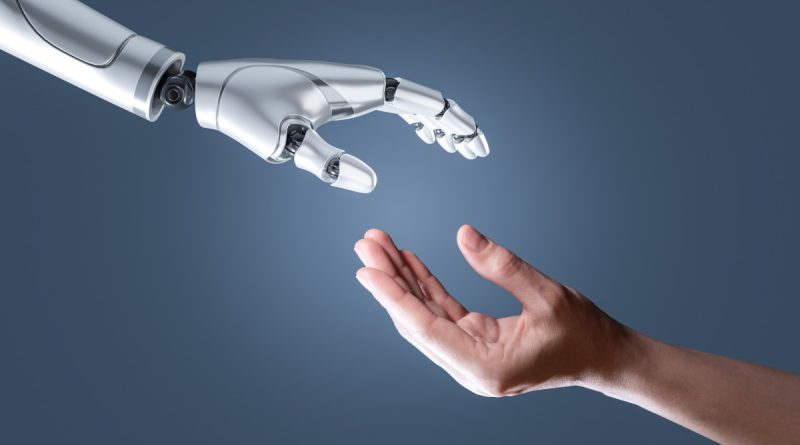Humanoids: Stepping Into the Future of Technology
Rodney Brooks, a prominent roboticist and co-founder of iRobot, has raised alarms about a potential investment bubble in humanoid robots, a perspective shared by many in the field.
In a recent article, Brooks underscores the significant venture capital being funneled into humanoid robotics companies like Figure. He contends that despite the substantial financial support, humanoid robots are still far from achieving the necessary dexterity for practical applications, rendering them largely ineffective.
This viewpoint may surprise many venture capitalists who are backing this technology. However, it resonates with the insights of various investors and AI specialists focused on robotics, who recently conveyed their thoughts to TechCrunch—suggesting that widespread adoption of humanoid robots could still be over a decade away.
The Challenges
Fady Saad, a general partner at Cybernetix Ventures, a VC firm concentrating on robotics, and co-founder of MassRobotics, told TechCrunch that he sees limited immediate market prospects for humanoids beyond their use as astronaut substitutes in space.
“Those unfamiliar with humanoids or not closely following advancements might find current developments impressive, but we remain cautiously skeptical about their practical applications and revenue potential,” Saad stated.
Saad also expressed safety concerns, especially in environments where humans and humanoid robots interact. Hazards could arise in settings such as factories where humanoids work alongside people, and these risks increase when humanoids are considered for homes—a key market for many companies.
“If one of these robots were to drop on children or pets, it could lead to serious injuries,” Saad cautioned. “This is just one aspect of a significant challenge that is largely overlooked. Additionally, how comfortable would people feel with a humanoid just sitting in their home? What if it got hacked? What if it behaved unpredictably at night and caused damage?”
TechCrunch Event
San Francisco
|
October 27-29, 2025
The timeline for advancing this technology remains uncertain, which is a crucial factor for venture capitalists assessing fund lifecycles and expected returns for their investors.
The Timeline
Sanja Fidler, vice president of AI research at Nvidia, noted in an August conversation with TechCrunch that establishing a clear timeline for humanoid development is tricky, with current excitement mirroring the early enthusiasm for self-driving cars.
“Think back to the self-driving car industry in 2016 and 2017; it felt like tangible progress was being made, didn’t it?” Fidler recalled. “Yet, it took several more years for technology to evolve, and as of now, no one has achieved full global autonomy. It’s a complex task.”
Nvidia’s chief scientist Bill Dally supported these sentiments in an interview with TechCrunch, emphasizing the necessity of investments to bolster infrastructure for humanoid developers.
Seth Winterroth, a partner at Eclipse, highlighted that while new advancements and demonstrations can be thrilling, humanoids are fundamentally complex. He believes that extended time is needed for them to realize their full potential.
“Conducting software updates for systems with six degrees of freedom is already quite challenging; many of the humanoids we discuss involve systems with over 60 degrees of freedom,” Winterroth explained regarding robotic movement capabilities. “Moreover, achieving viable unit economics is vital for a sustainable business model. We still have a long journey ahead.”
In many cases, humanoid robots are not yet ready for mainstream use.
Tesla illustrates the hurdles faced by companies in this domain. The company introduced its humanoid project, Optimus, in 2021, suggesting a launch in 2023.
That announcement did not come to fruition. When the bot eventually showed up in 2024 during Tesla’s “We, Robot” event, it was revealed that much of its operation was managed by off-scene human operators. The company now expects to start selling these robots in 2026.
Robotics startup Figure, recently valued at $39 billion after a September funding round, has also come under scrutiny regarding the actual number of humanoids it has deployed, a claim the company continues to defend.
What is Progressing
However, this does not imply that humanoids lack future market potential, nor does it suggest that pursuing this technology is unwarranted.
Brooks himself has expressed optimism about the eventual emergence of humanoids. Yet, rather than resembling the human-like forms often imagined, he anticipates they will come equipped with wheels and non-humanoid characteristics, likely emerging in over a decade.
Numerous companies are leading innovations in dexterity technology, which Brooks doubts humanoids will achieve, including Proception, backed by Y Combinator, and Loomia, which has created a kit to help robotics firms incorporate touch into their devices.
Several humanoid companies are already accepting orders and generating interest in their robots. K-Scale Labs received over 100 preorders in just the first five days for its humanoid bot, a surprise even to its founders, as noted by CEO Benjamin Bolte to TechCrunch.
Hugging Face has also seen substantial demand for its two humanoid robots. The company opened preorders for its smaller desktop model, Reachy Mini, in July, and the response was striking. Within just five days of the launch, Hugging Face reported $1 million in sales for its Reachy Mini robots.



